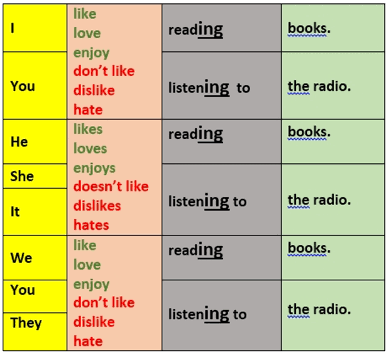TL;DR:
- Substitution tables are a helpful tool for students to practice using different words and expressions. They also help improve their vocabulary and confidence in English communication.
- Pre-teaching lexical bundles and collocations aids vocabulary and fluency development. They familiarize students with common word groups and natural phrase combinations.
- Assigning timed speaking and writing activities encourages clear and efficient expression. This can also help students build vocabulary skills and confidence.
- This post also offers alternative teaching techniques to try!
As language teachers, one of our primary goals is to help students become proficient in speaking and writing in English. This can be a challenging task, especially for students who use English as a second or additional language. Thankfully, there are several powerful strategies that you can use to help your students improve their vocabulary and gain confidence in their ability to communicate effectively.
In this blog post, we will take a look at three practical and powerful strategies. (1) Using substitution tables. (2). Pre-teaching lexical bundles and collocations. (3) Assigning timed speaking and writing activities.
Strategy #1: Using Substitution Tables
Substitution tables are a simple but effective tool that you can use to help your students practice using different words and expressions in their speaking and writing. A substitution table is a grid that lists different words or phrases that students can substitute for another in a sentence.
For example, you might create a substitution table for the verb “to be” that includes alternative verbs such as “seem,” “appear,” “look,” and “feel.” By using these tables, students can practice using a variety of vocabulary and gain confidence in their ability to express themselves in English.
It's paramount you provide regular feedback and encourage students to practice regularly and consistently, if your learners want to get the most out of these strategies. Share on XHere’s an example of a table to practice verb forms and verb tenses:

Strategy #2: Pre-Teaching Lexical Bundles and Collocations
Pre-teaching language is particularly helpful for beginners. It helps them focus on meaning rather than on unfamiliar words or phrases. This strategy becomes even more effective for improving students’ vocabulary when the focus is on lexical bundles and collocations.
Lexical bundles are groups of words that frequently occur together in English. Collocations are words that are commonly used together to form natural-sounding phrases. By pre-teaching these bundles and collocations, you can help your students recognize and use them in their own speaking and writing. This will not only improve their vocabulary but also help them sound more natural and fluent in English.
Interestingly enough, these two groups are ideal “content” for vocabulary-based substitution tables. You can encourage them to vary their choice of words and phrases by giving them a list of the most common adjectives and verbs that collocate with “pressure” or the bundles they want to use to describe a phenomenon, e.g. the nature of …/the essence of …/ the characteristics of …/ the features of …
Strategy #3: Assigning Timed Speaking and Writing Activities
You can take this skills enhancement to another level by assigning timed speaking and writing activities. They can be an effective way to help your students practice using substitution tables, lexical bundles, and collocations. By setting a time limit, you can encourage students to focus on expressing themselves clearly and efficiently.
For example, you might assign a timed speaking activity in which students have to describe a picture or tell a story in under two minutes. Or, you might assign a timed writing activity in which students have to write a short paragraph using a specific set of vocabulary or collocations.
As mentioned above, you can make the experience more visual by using substitution tables and color coding the different parts of speech to help students recognize the words more easily. These activities can help students build confidence in their ability to use vocabulary effectively and efficiently.
In conclusion, using substitution tables, pre-teaching lexical bundles and collocations, and assigning timed speaking and writing activities are powerful strategies that can help your students improve their vocabulary and gain confidence in their ability to communicate effectively in English. By incorporating these strategies into your teaching practice, you can create a more engaging and effective learning environment that fosters language development and helps students achieve their language learning goals.
It’s paramount you provide regular feedback and encourage students to practice regularly and consistently, if your learners want to get the most out of these strategies.
If you feel a little overwhelmed by these three strategies, you can put these alternatives to excellent use.
Reading and Writing Exercises
Provide students with reading materials that contain challenging vocabulary and ask them to read and analyze the texts for meaning. Assign writing exercises that require students to use specific vocabulary words or collocations in their writing.
Vocabulary Games
Use games and activities to make vocabulary learning more engaging and fun. For example, they can play word association games, memory games, or hangman to help students learn new vocabulary and practice using it.
[scroll down to keep reading]
Interactive Presentations
Use interactive presentations such as PowerPoint or Google Slides to teach vocabulary and language skills. Remember to include images, videos, and audio recordings to make the presentation more engaging and memorable for students.
Authentic Materials
Use authentic materials such as news articles, songs, or movies to expose students to real-world vocabulary and language use. This approach can help students develop their language skills in context and learn vocabulary that is relevant to their interests and needs.
Note that there is no one-size-fits-all approach to language teaching. Therefore, you should consider your students’ needs, interests, and learning styles when choosing teaching strategies. By experimenting with different approaches and strategies, you will find the ones that work best for your students and provide them with a more effective and engaging learning experience.
About Stephan Hughes
Stephan is a Trinidad and Tobago national pursuing his doctorate in Applied Linguistics at the Pontifical Catholic University in Sao Paulo, Brazil. He is an adjunct lecturer in postgraduate programs on English Language Teaching, Translation and Interpreting. He has taught English as a foreign and or second language in language centers, private schools and postgraduate programs. His interests include lifelong learning, language development, learning technologies and social media.


